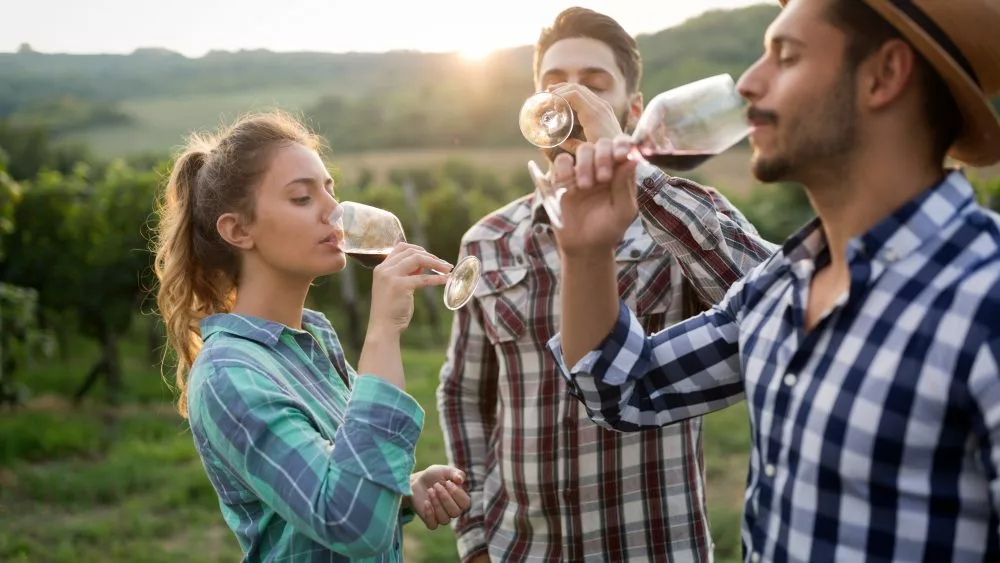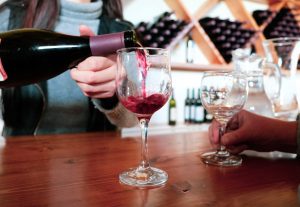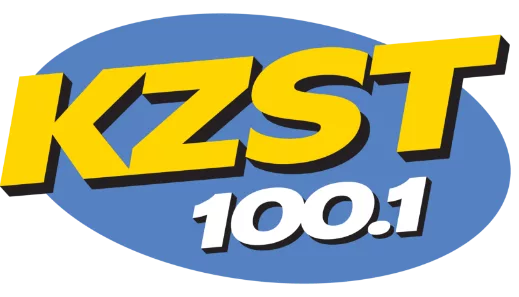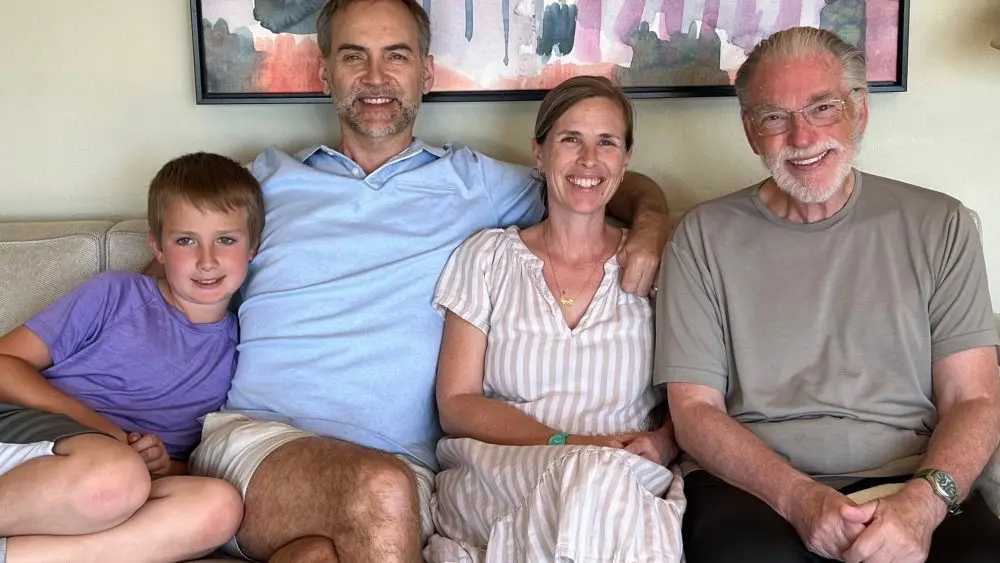
Don’t blame the messenger.
Those were the words Rob McMillan emphasized in the introduction to his Silicon Valley Bank State of the U.S. Wine Industry 2025 report, the annual industry overview hotly anticipated each year throughout the U.S. wine world.
For several years, McMillan’s reports have sounded the alarm about how changing demographics and consumption habits should put the industry on notice—baby boomer wine lovers are aging out of the market, while younger consumers are drinking less and choosing other forms of alcohol when they do. Despite his predictions to the contrary last year, tasting room visits are still on a downward trend, while direct-to-consumer sales continued to slow.
“This is what you get when you make predictions and insert hope into the math,” McMillan conceded in this year’s report. “I stretched for something positive… and it turned out wrong.”
While the industry is undergoing a major reset—its first “demand-based correction in three decades,” he notes—certain sectors are seeing positive signs. White wine’s growth rate is on a positive trajectory, even surpassing red wine. And no- and low-alcohol wine products are growing “at a dynamic pace,” though he concedes that’s a mixed bag in an industry focused on selling alcohol.
Still, as in recent years, the main headline is about demographics. How can the industry entice the next cohort of middle-aged drinkers—those currently in the 30- to 45-year-old range—into the wine-lovers fold?
Unfortunately, there’s no simple answer, he says.
Here are a few key points drawn from McMillan’s 2025 industry review:
Supply and demand
One of the industry’s challenges in recent years has been supply and demand, the latter of which has been ebbing, while supply failed to slow down in kind. This was particularly problematic during the pandemic when consumer sales plateaued, yet many wholesalers were working under guaranteed purchase agreements, resulting in warehouses overstocked with inventory. While inventories were pared down in 2024, it was only by 2.4%, says McMillan. “There is a lot of work left,” he says. McMillan predicts wine discounting will be employed to help clear the backlog and if growth rates are positive, oversupply could be leveled out in a matter of months. If not, it could take into 2026 before inventories return to normal turnover.
Tasting room visitations
While a decline in tasting room visitations was expected following the pandemic—as Americans traveled abroad following two years of delayed vacations—the continuing trend is cause for concern and might indicate certain pandemic-adopted patterns are here to stay. For instance, consumers over 60 may continue to shop online for wine and save their domestic travel to see family, a 2024 study by McKinsey & Company indicates. This trend is reflective in Visit Napa Valley research, which shows over the past six years the average age of visitors to Napa Valley dropped from 46 to 40—problematic given younger consumers are more frugal and drink less overall. “Selling expensive premium wine in a 375ml format is one way to appeal to a younger” demographic, says McMillan, pointing out that they are willing to splurge on smaller-ticket luxuries.

Given younger consumers’ penchant for frugality, wine businesses may also have to reconsider their tasting room fees, which have increased by more than 200% since 2012 (the average reserve tasting is currently $72; standard is $38), says McMillan. He believes winery owners should rethink their tasting room fee structures—perhaps offering entry-level tastings during slow periods of the week and include live music or games to draw in younger clientele. “There are endless possibilities,” he says.
Bring on the millennials!
Noting that the glory years of wine-guzzling and conspicuous consumption by the baby boomer generation is sunsetting, McMillan calls those aged 31 to 49 the next “opportunity set” for the industry. If they can steer that cohort toward preferring wine over other choices, it could set up the industry for the decades to come. The caveat: Members of that age group aren’t new recruits, they’ve already tried plenty of wine and have an opinion—and in some cases that opinion is that they prefer other beverages. “We need to convert those,” says McMillan. “That is a more difficult task, but it’s the critical one at hand.”
According to estimated consumer preferences, among drinking-age Americans who consume alcohol every decile-age demographic (i.e. people in their 20s, 30s, 40s, etc.) under 60 ranks wine as their third choice (behind beer and spirits). But every decile age demographic over 60 ranks wine first. That said, the age 30 to 39 cohort has the largest overall number of alcohol consumers, therefore it ranks second only to the age 60 to 69 group in total number of drinkers who prefer wine over other choices. Concludes McMillan: “If we present a product that hits their value points, 30- to 45-year-old consumers will choose wine more often.”
Will younger consumers ‘age into wine’?
McMillan acknowledges that within the current population, the preference for wine grows with age. But he cautions against the view that consumers will switch to wine over the course of their lives simply because they age. “That is and always has been a fallacy,” he writes. Older generations prior to the baby boomers preferred spirits and beer over wine, he points out—and didn’t become wine drinkers in their high-spending years. Generations don’t always copy their parents’ consumption patterns—consumerist boomers proved that to their thrifty Depression-era parents. Patiently waiting for younger people to grow into wine is a losing strategy, he says.

Market correction—how long?
As wine-consumer demographics shift, industry watchdogs have one common question—how long will this demand correction take? “There are far too many variables to predict confidently,” says McMillan. For instance, the downturn in demand in the late 1980s was corrected in the early 1990s thanks to the French paradox—studies showing the French population had lower rates of coronary heart disease, leading to the suggestion that moderate red-wine consumption has health benefits. Recent years have seen a “no safe amount” anti-alcohol campaign negatively affect wine demand, though that narrative has been tempered with credible studies supporting alternative views, says McMillan. Still, “when demand flattens, as is currently the case, there are limited corrective strategies,” he continues. A game-changer like the French paradox “is unlikely to fall into our laps twice,” he says.
McMillan believes collaboration is key, and the need for new marketing campaigns at every level has never been greater. “Anything we can do to collaborate with neighbors, friendly regions and fellow association members to market wine in wider circles can help shorten the length and severity of this cycle,” he writes. “And once this downturn ends, strengthen these relationships to bolster revenue, volume and profitability.”
The risks of ignoring a rapidly changing market far outweigh the risks of trying new strategies, he stresses. “An untested idea, a novel outreach approach, collaboration with neighboring wineries and establishing a Wine Business Improvement District are all worth considering.”
Concluding on a hopeful note, McMillan asserts that “wine is what younger consumers want. They just don’t know it yet.”
“Wine’s characteristics fit the bill—green, plant-based, natural, minimal additives, no added sugars, often organic and more—all [those] align with younger consumers’ values,” he points out. “There is an opportunity, particularly in the 30- to 45-year-old age brackets, to change minds about wine.”

